I earn $12,000/month - PART 5 Optimizing Your Website
This post is a follow up to my other three posts about making as much or more than me. Here are the other two articles:
1. I earn $12,000/month – Let me show you how I do it
2. I earn $12,000/month - PART 1 Joining An Affiliate System
3. I earn $12,000/month - PART 2 researching keywords to target for affiliate website
4. I earn $12,000/month - PART 3 Figuring Out Structure & Information Architecture
5. I earn $12,000/month - PART 4 Getting A Website Started
I strongly recommend you read the three posts above before continuing on.
You’ve probably read a lot of checklists from different websites. I’ll share what we do internally here at New Media Sources to make sure small businesses increase rankings and revenue through their website.
Organizing and Completing Your SEO Tasks
As you may know, there are many ways you can complete your checklist. Some people have an excel file, some agencies use Google Drive, and some might even print their checklist and check tasks off with a simple pen.
I can say that I’ve tried it all. But when you’re working in a team environment, there is no way you can use just one method of completing and tracking tasks in your checklist.
So what’s the solution to managing, completing and reporting on your checklist? Basecamp.com and Google Drive

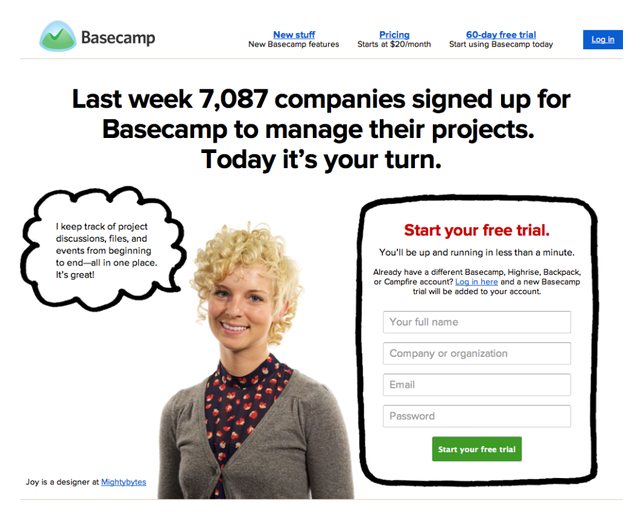
I am not going to go over how you can setup Basecamp or Google Drive and assume you can do it yourself. I would rather share our general checklist so you can apply it to your own projects.
Let’s get started
Before you start any online marketing campaign, the first part of your checklist should be to benchmark everything from rankings, content, Meta tags etc.
We have many tools we use in the industry. Some are paid and some are free. You’ll notice the different tools I use throughout my checklist. I’ll explain my Benchmarking tasks below:
Benchmarking Your Online Marketing Campaign
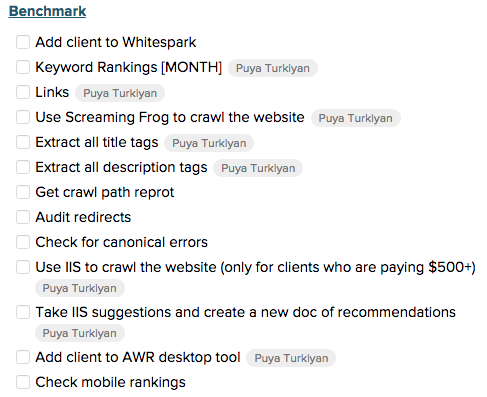

Add client to whitespark
- Whitespark has a local citation finder. It’s a great tool to use. I might switch to Brightlocal and see what they have to offer that’s different
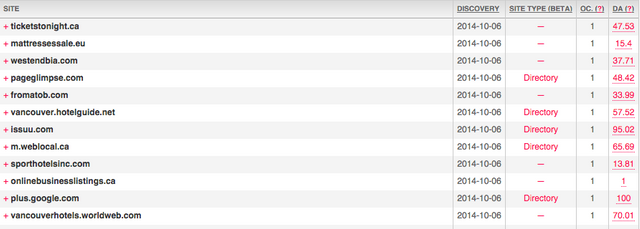
- Keyword Rankings
- I know keyword rankings isn’t everything and I agree. However, this is still how most clients get their traffic so tracking and benchmarking keywords is extremely important
- Backlinks
- We need to know what the backlinks of the website we’re working on. This way, we’re sure there are no penalties. The client can also see the improvements in rankings and traffic when we get new links
- Extract all title tags
- Use Screaming Frog (a must and I am sure you all use it) to extract all title tags for future reference
- Extract all description tags
- Again, use Screaming frog to extract all your meta description tags for future reference
- Audit redirects (bonus 1)
- You need to make sure the clients redirects in a migration is setup properly
- Get a crawl path report (bonus 2)
- Find out holes and key issues with crawl paths with screaming frog simply by selecting a link > export > crawl path report
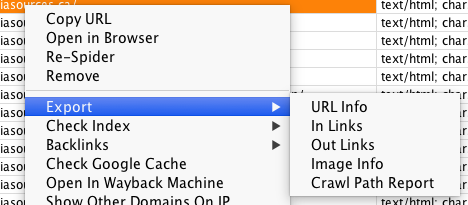
Check for canonical issues
- You can do this with screaming frog by selecting Reports > Canonical Errors
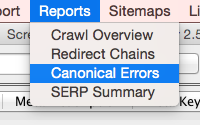
- Use IIS to crawl the website
- Other than @AnnieCushing I’ve seen no one else advocate using IIS to crawl a website. Do yourself a favour and download IIS here
- Take IIS suggestions and create a new doc of recommendations
- This is self explanatory
- Add client to AWR Cloud or AWR Desktop
- I can’t stress enough how much I love AWR tools because they’ve not only helped me with an amazing rank tracking tool(s), but also with how I’ve built myself up in our industry. They’re not just a software company for online marketers. Amazing folks who deserve to be recognized throughout our community
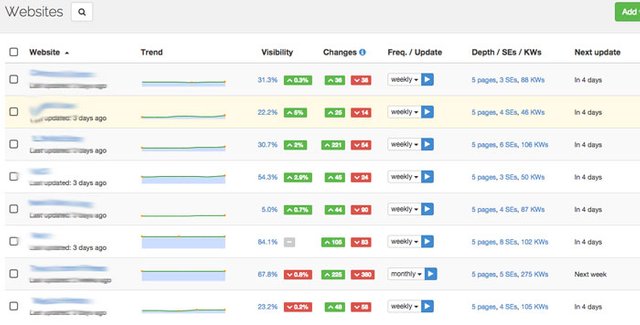
- Check mobile rankings
- You can check mobile rankings with AWR Cloud or Desktop
As you can see, a lot goes into benchmarking a client. You can probably get all of this done in one day for “a” client if there are no distractions. I am not sure why most checklists on other posts don’t have benchmarks in their lists.
An online marketing campaign is nothing without knowing how/where you started
Keyword Research
Others might organize their lists differently, but I like to dive right into keyword research after benchmarking everything. Remember, I add any keyword opportunity that I find into my AWR Cloud/Desktop platform right after a full analysis of what needs to be targeted. So how do I find keyword opportunities? Here’s the list:
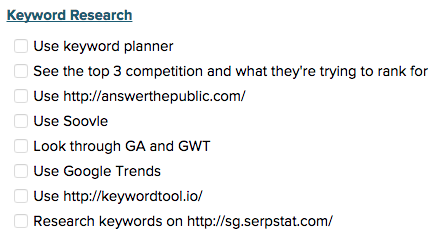
- Use keyword planner
- Google Keyword Planner is a good start. Of course, you shouldn’t just stop there. Most agencies here in Vancouver come to a dead STOP right after Keyword Planner. A HUGE mistake!
- Look at top 3 “ranked” competitors in their cities
- You’ll get a lot of data this way. Use SEMrush if you to see exactly what your competitors are doing
- Use Answer The Public to get amazing keyword data
- I LOVE http://answerthepublic.com/ because they have an amazing visualization, which makes it easy for our clients to understand how we target and market different keywords
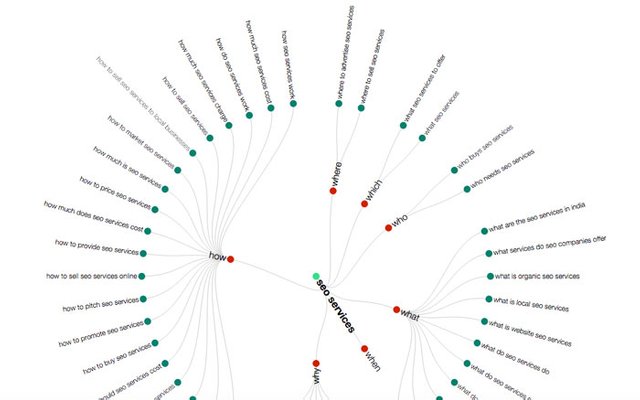
- Use Soovle
- Another cool tool to see what the most popular search engines suggest
- Look through Google Analytics and Google Webmaster Tools
- You can get a lot of keyword data from Google Analytics and Webmaster Tools. Webmaster Tools especially is important to look through for key changes and metrics
- Use Google Trends
- By using Google Trends you can see what’s trending in the industry you’re trying to market. You can get a lot important information in terms of what’s popular and where
- Use Keyword Tool.io
- Another really cool tool to track suggestions for primary and secondary keywords
- Try SerpStat.com
- Another amazing tool to find popular keywords in various forms
I am sure there are dozens and dozens of keyword tools out there but these are my personal favourite tools for all campaigns we work on.
Full audit
My audit list isn’t comprehensive and detailed. I simply put everything together in one doc to send over to the client. They can then see exactly what we’re working on and will be working on. Here’s the list:
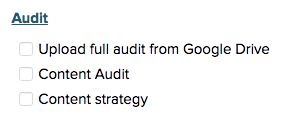
- Upload full audit here
- I won’t write every step that goes into an audit. Most of you know exactly what has to be checked when auditing a website. Here’s an example of a detailed SEO audit
- Content audit
- We’ve all seen thin, useless content before. Audit the content and create docs in Google Drive with better relevant content meant for conversion. Yes, conversion rate optimization should be part of your SEO campaign
- Content Strategy
- Could be your blogging, copy or an eBook campaign
Local/SEO Checklist
This is probably the most important list for most of you. There are lots of lists out there claiming to be a complete SEO checklist but I would say there are only less than 5 you can rely on. My personal favourite is Annie Cushing’s Audit Checklist. It’s very detailed and has EVERYTHING covered. Here’s my list:
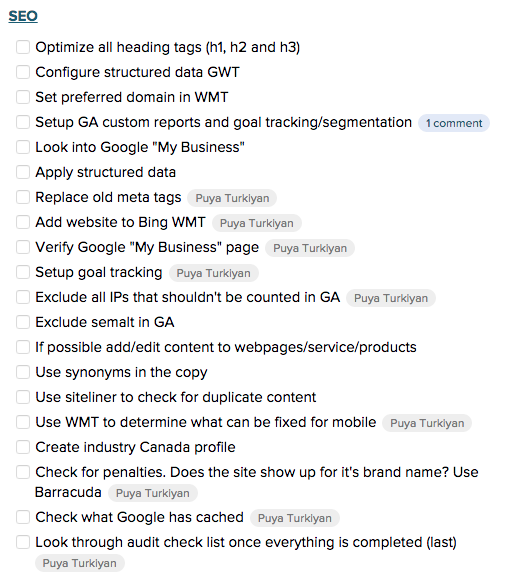
- Optimize all heading tags
- All pages should technically have an h1, h2 (maybe h3) tag. Optimize them organically with your primary and secondary keywords. Make sure you ask for approvals before you change your client’s site
- Configure structured data within Google Webmaster Tools
- Google has a data highlighter you can use if you don’t know how to use http://schema-creator.org/. However, Raven Tools offers http://schema-creator.org/ to generate schema easily. Also, http://tools.seochat.com/ also offers REALLY cool free tools to generate schema code
- Set preferred domain in Google Webmaster Tools
- Make sure the right country is selected in WMT for better geo targeting
- Setup custom reports and tracking/segmentation in Google Analytics
- Here’s a good start http://www.customreportsharing.com/ or advanced segments by Josh Braaten
- Google My Business
- Make sure the Google My Business page is setup properly, verified, has the correct address+ phone number, has logo and images of the business and is in the correct category(s)
- Apply structured data in code
- Find best places to apply structure data. This could be an address, a blog post, a product etc.
- Replace old meta tags
- Create a new doc, put the old Meta tags and add the new Meta-tags right below them to compare. You should also have the primary keywords for each page on this document
- Add website to Bing Webmaster Tools
- Bing Webmaster Tools gives you really great data and in some cases is better than Google Webmaster Tools. A must for serious online marketers
- Exclude all internal IPs including client office IPs
- Make sure the client knows you’re doing this because chances are traffic is going drop
- Exclude bad bots in Google Analytics
- You can do this with filters and in Google Anlytics settings (View Settings > Exclude all hits from known bots and spiders
- Exclude semalt in Google Analytics
- Semalt is extremely annoying and distorts traffic data. You can do this in Google Filters. Here’s a great post that shows you how to do this: How to remove semalt from Google Analytics
- Look through your audit checklist once everything is completed
- Go over everything that needs to be done in your audit and reform what needs to be done
- If possible add/edit content to webpages/services/products
- Again, you’ll need to go over the most important pages and add content/copy where appropriate. This depends on the agreement you have with the client. Our smallest package includes seven of the most important pages.
- Use synonyms in the copy
- As you know, there are different variations of the same keyword. Find them and put them in the appropriate page. The more variations you have, the more you’ll show up in search. Just make sure it’s organic and doesn’t sound weird when you read it out loud
- Check for duplicate content issues
- You can do this in Moz, Raven Tools, Copyscape and Siteliner. However, you’ll have to pay for these services to get vital duplicate content warnings
- Use Google Webmaster Tools and determine what can be improved on the mobile version of the site
- You may be aware that Google favours websites that are mobile friendly. They’ve added a section under Search Traffic > Mobile Usability where you can see usability errors in Webmaster Tools
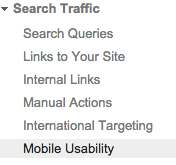
- Check for penalties
- Does the site come up for its brand at the top of SERPs? Use Barracuda Penguin Tool and get a visualization of when an algorithm update happened. You can then see if the website you’re working on has been hit by a penalty by Google
- Find what’s cached in Google SERP
- Look at what’s cached in Google SERP. Does it look like they’re crawling your website often and updating what’s being cached?
Website Edits
Editing a website so that’s easier for visitors and search engines to go through is essential. The whole process of going page to page should be seamless and extremely fast. Our goal with our clients is to make sure each and every website loads in less than three seconds.
Of course, it helps that we have 2 UI designers/developers, 1 server specialist and a hardware expert to make our clients get what they’re paying for. We also host our premium clients on Wpengine, Pantheon, which makes a HUGE difference in speed optimization. It’s more expensive than regular hosting but well worth the price.
Here’s our list for website edits and optimization:
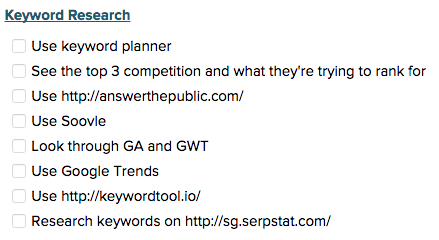
- Enable website caching
- It’s extremely important to get caching right. Wpengine and Pantheon do a great job of this automatically
- Image optimization
- We have to make sure each image is optimized correctly and is smaller than 100Kb
- Enable Gzip
- Minify CSS/JS files
- Every millisecond helps us and minimizing CSS and JS files gives you that edge
- Add/Edit Sitemap
- Make sure “if” the client has a sitemap, it’s setup properly. You can go through the site with screaming frog. If they don’t have a sitemap, make one for them
- Check robots.txt
- The robots.txt file MUST be setup properly. All directories that shouldn’t be indexed should be setup here
- Install Google Page Speed Mod
- I am not an expert in this field but our UX expert Jassi does wonders with Google Page Speed Mod when he can
- Can silo structure be used
- Silo structured websites perform better on search engines and is something that you should look into. Read “How to build a website silo structure”
Link Building
Link building is still a huge ranking signal and probably in the top five most important list for all online marketers. It’s difficult, expensive and very time consuming.
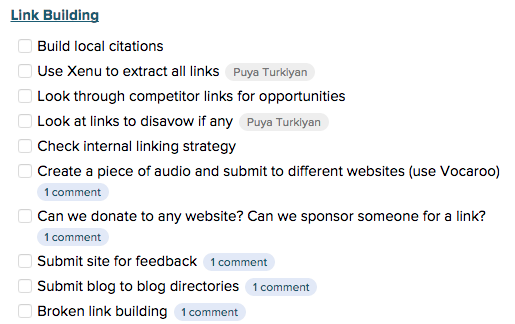
Here’s my checklist for link building:
- Start building local citations
- Very important for local businesses
- Use Xenu
- Xenu will scan the whole site and find irregularities with internal links. Highly recommended with all campaigns
- Look through competitor links
- Disavow bad links
- This can also be in the benchmark list because you need to know if there are bad links before you start building links. Learn how to disavow bad links here
- Check internal links
- Internal links are VERY important. Make sure you have a proper internal link building strategy
- Create audio and post on different sites
- You can get super high valued links on sites like: com, bandcamp.com, or sutros.com
- Donate/sponsor for a link
- Donations can really help with big links if you look in the right places. Try using “donate to us”, allintitle: “contributors” or allintitle: “sponsors” and see what’s possible
- Submit site for feedback
- Try going on feedback sites like conceptfeedback.com, bounceapp.com or suggestionbox.com to get really good back links and great feedback. Win, win for everyone
- Submit website to blog directories
- Careful with this one. You don’t want to add a site to a bad directory. Here are 23 blog directories to submit to
- Broken link building
- Broken link building is extremely powerful. However, it’s very hard to accomplish. I look at least ten competitors and see if I can find any broken links to capitalize on
Final Thoughts
You probably have a lot of questions. This list is for beginners to be honest. I have an advance list, which I will share later on when I get more of a reaction from my posts.